Accelerating and Aligning Clinical Episode Payment Models
Report: Released August 1, 2016
Description
While the design of an episode of care is critical to its success, some aspects of the way episode payments are conducted affect the likelihood that payers and providers will be able to adopt a given model. These operational considerations include: remaining mindful of the perspectives of stakeholders; building and maintaining an appropriate infrastructure for data collection, analysis, and payment; staying abreast of regulatory statutes and regulations that could affect the design and operation of episode payments; and, finally, considering how episode payments interact with population-based payments.
Authors
Publication Info
Publication date: August 1, 2016
Pages 93-104
Suggested Citation: Health Care Payment Learning & Action Network. Accelerating and Aligning Clinical Episode Payment Models.
August 1, 2016.
The following terms are defined within the white paper as it relates to population-based payment. For a full list of terms and definitions view our work product glossary – coming soon.
Full Continuum of Care
All aspects of care delivery, spanning preventive to end-of-life services in all settings.
Financial Attribution
A financial benchmark is a population-based spending level that is used to establish PBP rates for providers. Financial benchmarks may be based on a provider organization’s spending in the previous year (i.e., “historical” benchmarks), on regional or national spending levels (i.e., “regional” and “national” benchmarks), or through some mechanism (e.g., bidding). Once a method for setting benchmarks is in place, updated benchmarks must be risk-adjusted to take into account patient mix. Additionally, financial benchmarks should be adjusted to account for geographic variation in input costs (e.g., wages, rents, etc.) if variations exist across the covered region, but they should not be adjusted on account of variation in utilization of medical care.
Population-Based Payment Model
A payment model in which a provider organization is given a population-based global budget or payment and accepts accountability for managing the total cost of care, quality, and outcomes for a defined patient population across the full continuum of care. PBP models discussed in this paper correspond to payment models in Categories 3 and 4 of the LAN’s APM Framework.
Total Cost of Care (TCOC)
Financial benchmarks reflect the TCOC for a given patient population over a given period of time. For the purposes of setting the benchmark, TCOC calculations should only include services covered under the insurance plan, because it would be unreasonable for benchmarks to reflect payments for services that are not covered (e.g., dental services). Nevertheless, the Work Group strongly believes that the scope of TCOC should be as broad as possible and should “carve in” behavioral health care and pharmaceutical costs, because these are critical areas of care for patients and have a significant impact on national health expenditures and patient outcomes. The Work Group also believes that TCOC should be: 1. Measured consistently within market segments (e.g., commercial, Medicare, and Medicaid); 2. Attributed to provider organizations that take accountability; 3. Designed to allow for maximum flexibility in how provider organizations spend money, including investments in social services and other interventions that address social determinants of disease (and in fact may not have been used to set the benchmark). Finally, TCOC (as opposed to benchmarks) can be used to compare the efficiency of similar types of providers, and the Work Group believes that providers’ TCOC performance should be shared widely, in the manner described in the PBP Data Sharing White Paper.
Clinical episode payment models are different from traditional FFS health care payment models in which providers are paid separately for each service they deliver. Instead, clinical episode payment models take into consideration the quality, costs, and outcomes for a patient-centered course of care over a set period of time and across multiple settings. This course of care is known as the clinical episode. Research suggests that when payments for health care are based on the care delivered in a clinical episode, the result is increased coordination of care, enhanced quality of care, and less fragmentation in the medical system. This leads to better experience and health for patients and lower costs for payers and providers.
Coming soon
Webinars
February 2016 Webinar: LAN Update – Accelerating and Aligning Clinical Episode Payment Models: Preliminary Recommendations on Elective Joint Replacement (archive)
March 2016 Webinar: LAN Update – Episode Bundles: Why It Matters and What Purchasers Can Do Now (archive)
March 2016 Webinar: LAN Listening Session for States – Preliminary Recommendations on Elective Joint Replacement (archive)
March 2016 Webinar: LAN Listening Session for Payers – Preliminary Recommendations on Elective Joint Replacement (archive)
March 2016 Webinar: LAN Listening Session for Providers – Preliminary Recommendations on Elective Joint Replacement (archive)
April 2016 Webinar: LAN Summit Session – When APMs Intersect: The Challenges and Opportunities of Implementing Episode Payment in a Population-Based Payment Environment (archive)
April 2016 Webinar: LAN Summit Session – Improving the Delivery of Cardiac Care Via Episode Payment Opportunities and Challenges (archive)
April 2016 Webinar: LAN Summit Session – Improving the Delivery of Maternity Care Via Episode Payment Opportunities and Challenges (archive)
May 2016 Webinar: LAN Listening Session – Opportunities & Challenges in Maternity Care Episode Payments (archive)
June 2016 Webinar: LAN Listening Session – Opportunities & Challenges in Cardiac Care Episode Payments (archive)
Blogs
Population-Based Payment Models: Overcoming Barriers, Accelerating Adoption
by Dana Gelb Safran, ScD, Glenn Steele, Jr, MD, PhD, and Elizabeth Mitchell
Archival Materials
Draft paper: Accelerating and Aligning Population Based Payment Models: Financial Benchmarking
Summary of Public Comments: Summary of Public Comments

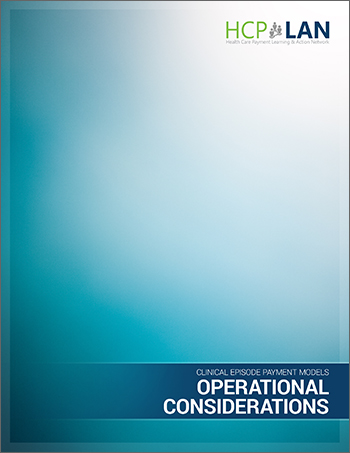




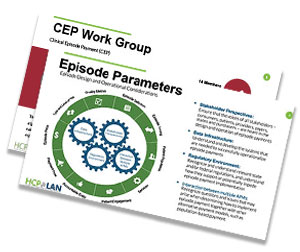
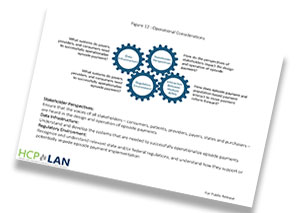
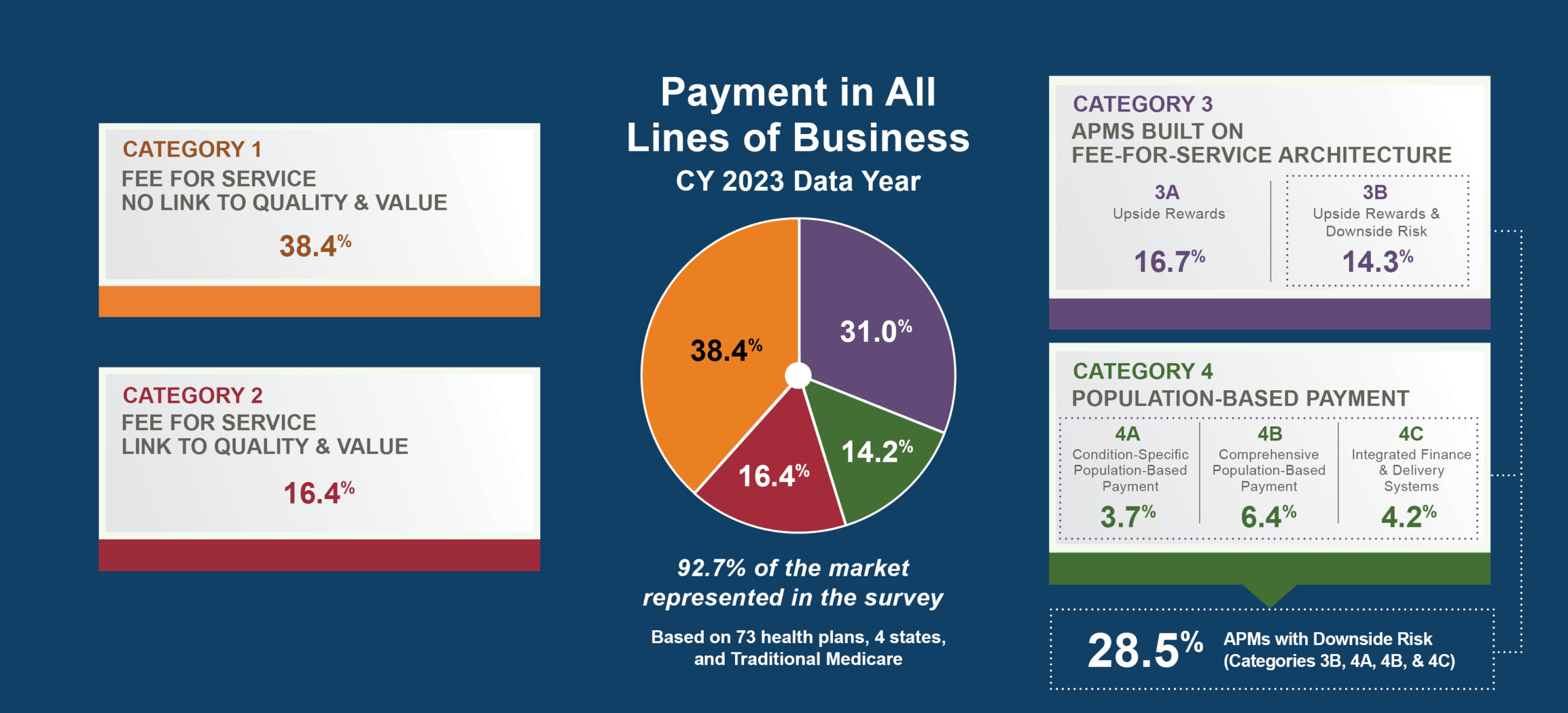

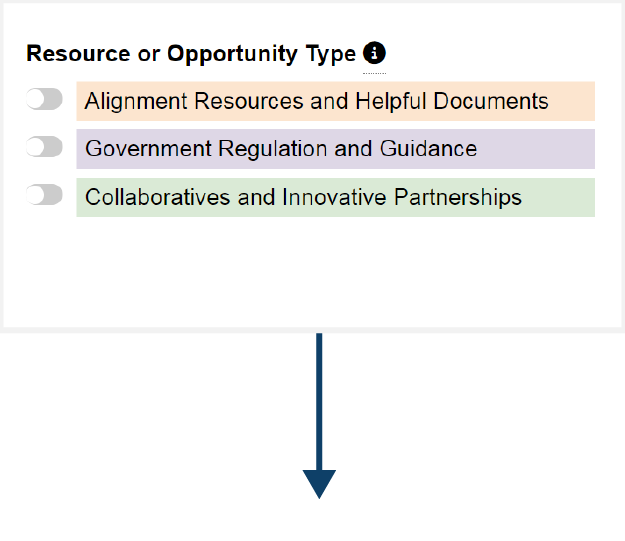
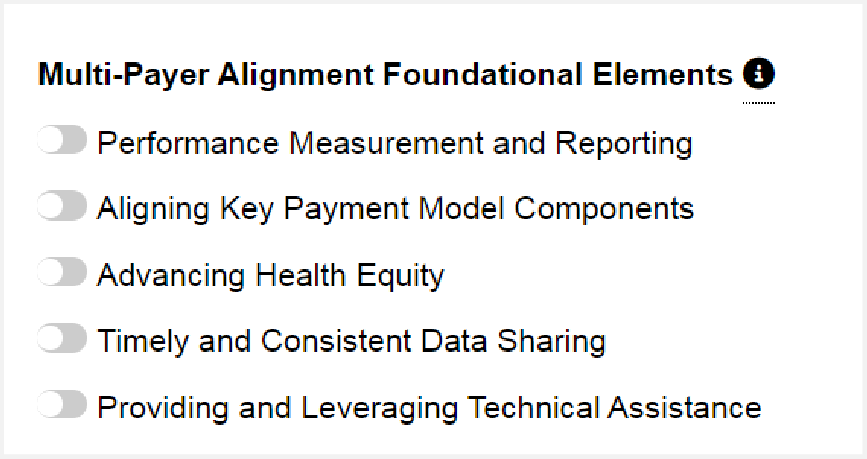




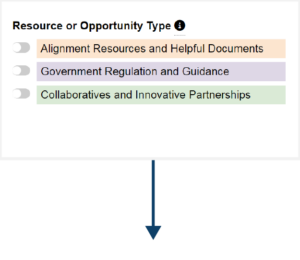

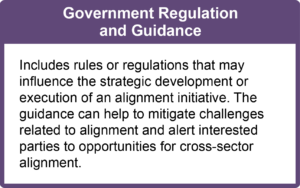
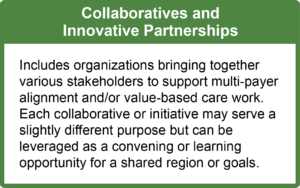
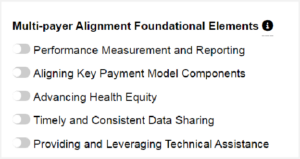




 Emily DuHamel Brower, M.B.A., is senior vice president of clinical integration and physician services for Trinity Health. Emphasizing clinical integration and payment model transformation, Ms. Brower provides strategic direction related to the evolving accountable healthcare environment with strong results. Her team is currently accountable for $10.4B of medical expense for 1.6M lives in Medicare Accountable Care Organizations (ACOs), Medicare Advantage, and Medicaid and Commercial Alternative Payment Models.
Emily DuHamel Brower, M.B.A., is senior vice president of clinical integration and physician services for Trinity Health. Emphasizing clinical integration and payment model transformation, Ms. Brower provides strategic direction related to the evolving accountable healthcare environment with strong results. Her team is currently accountable for $10.4B of medical expense for 1.6M lives in Medicare Accountable Care Organizations (ACOs), Medicare Advantage, and Medicaid and Commercial Alternative Payment Models. Mr. James Sinkoff is the Deputy Executive Officer and Chief Financial Officer for Sun River Health (formerly known as Hudson River HealthCare), and the Chief Executive Officer of Solutions 4 Community Health (S4CH); an MSO serving FQHCs and private physician practices.
Mr. James Sinkoff is the Deputy Executive Officer and Chief Financial Officer for Sun River Health (formerly known as Hudson River HealthCare), and the Chief Executive Officer of Solutions 4 Community Health (S4CH); an MSO serving FQHCs and private physician practices. Victor is the Chief Medical Officer for TennCare, Tennessee’s Medicaid Agency. At TennCare, Victor leads the medical office to ensure quality and effective delivery of medical, pharmacy, and dental services to its members. He also leads TennCare’s opioid epidemic strategy, social determinants of health, and practice transformation initiatives across the agency. Prior to joining TennCare, Victor worked at Evolent Health supporting value-based population health care delivery. In 2013, Victor served as a White House Fellow to the Secretary of Health and Human Services. Victor completed his Internal Medicine Residency at Emory University still practices clinically as an internist in the Veteran’s Affairs Health System.
Victor is the Chief Medical Officer for TennCare, Tennessee’s Medicaid Agency. At TennCare, Victor leads the medical office to ensure quality and effective delivery of medical, pharmacy, and dental services to its members. He also leads TennCare’s opioid epidemic strategy, social determinants of health, and practice transformation initiatives across the agency. Prior to joining TennCare, Victor worked at Evolent Health supporting value-based population health care delivery. In 2013, Victor served as a White House Fellow to the Secretary of Health and Human Services. Victor completed his Internal Medicine Residency at Emory University still practices clinically as an internist in the Veteran’s Affairs Health System. Dr. Brandon G. Wilson, DrPH, MHA (he, him, his) joined Community Catalyst as the Director of the Center for Consumer Engagement in Health Innovation, where he leads the Center in bringing the community’s experience to the forefront of health systems transformation and health reform efforts, in order to deliver better care, better value and better health for every community, particularly vulnerable and historically underserved populations. The Center works directly with community advocates around the country to increase the skills and power they have to establish an effective voice at all levels of the health care system. The Center collaborates with innovative health plans, hospitals and providers to incorporate communities and their lived experience into the design of systems of care. The Center also works with state and federal policymakers to spur change that makes the health system more responsive to communities. And it provides consulting services to health plans, provider groups and other health care organizations to help them create meaningful structures for engagement with their communities.
Dr. Brandon G. Wilson, DrPH, MHA (he, him, his) joined Community Catalyst as the Director of the Center for Consumer Engagement in Health Innovation, where he leads the Center in bringing the community’s experience to the forefront of health systems transformation and health reform efforts, in order to deliver better care, better value and better health for every community, particularly vulnerable and historically underserved populations. The Center works directly with community advocates around the country to increase the skills and power they have to establish an effective voice at all levels of the health care system. The Center collaborates with innovative health plans, hospitals and providers to incorporate communities and their lived experience into the design of systems of care. The Center also works with state and federal policymakers to spur change that makes the health system more responsive to communities. And it provides consulting services to health plans, provider groups and other health care organizations to help them create meaningful structures for engagement with their communities. Tamara Ward is the SVP of Insurance Business Operations at Oscar Health, where she leads the National Network Contracting Strategy and Market Expansion & Readiness. Prior to Oscar she served as VP of Managed Care & Network Operations at TriHealth in Southwest Ohio. With over 15 years of progressive health care experience, she has been instrumental driving collaborative payer provider strategies, improving insurance operations, and building high value networks through her various roles with UHC and other large provider health systems. Her breadth and depth of experience and interest-based approach has allowed her to have success solving some of the most complex issues our industry faces today. Tam is passionate about driving change for marginalized communities, developing Oscar’s Culturally Competent Care Program- reducing healthcare disparities and improving access for the underserved population. Tamara holds a B.A. from the University of Cincinnati’s and M.B.A from Miami University.
Tamara Ward is the SVP of Insurance Business Operations at Oscar Health, where she leads the National Network Contracting Strategy and Market Expansion & Readiness. Prior to Oscar she served as VP of Managed Care & Network Operations at TriHealth in Southwest Ohio. With over 15 years of progressive health care experience, she has been instrumental driving collaborative payer provider strategies, improving insurance operations, and building high value networks through her various roles with UHC and other large provider health systems. Her breadth and depth of experience and interest-based approach has allowed her to have success solving some of the most complex issues our industry faces today. Tam is passionate about driving change for marginalized communities, developing Oscar’s Culturally Competent Care Program- reducing healthcare disparities and improving access for the underserved population. Tamara holds a B.A. from the University of Cincinnati’s and M.B.A from Miami University.


 Dr. Peter Walsh joined the Colorado Department of Health Care Policy and Financing as the Chief Medical Officer on December 1, 2020. Prior to joining HCPF, Dr. Walsh served as a Hospital Field Representative/Surveyor at the Joint Commission, headquartered in Oakbrook Terrace, Illinois.
Dr. Peter Walsh joined the Colorado Department of Health Care Policy and Financing as the Chief Medical Officer on December 1, 2020. Prior to joining HCPF, Dr. Walsh served as a Hospital Field Representative/Surveyor at the Joint Commission, headquartered in Oakbrook Terrace, Illinois.








